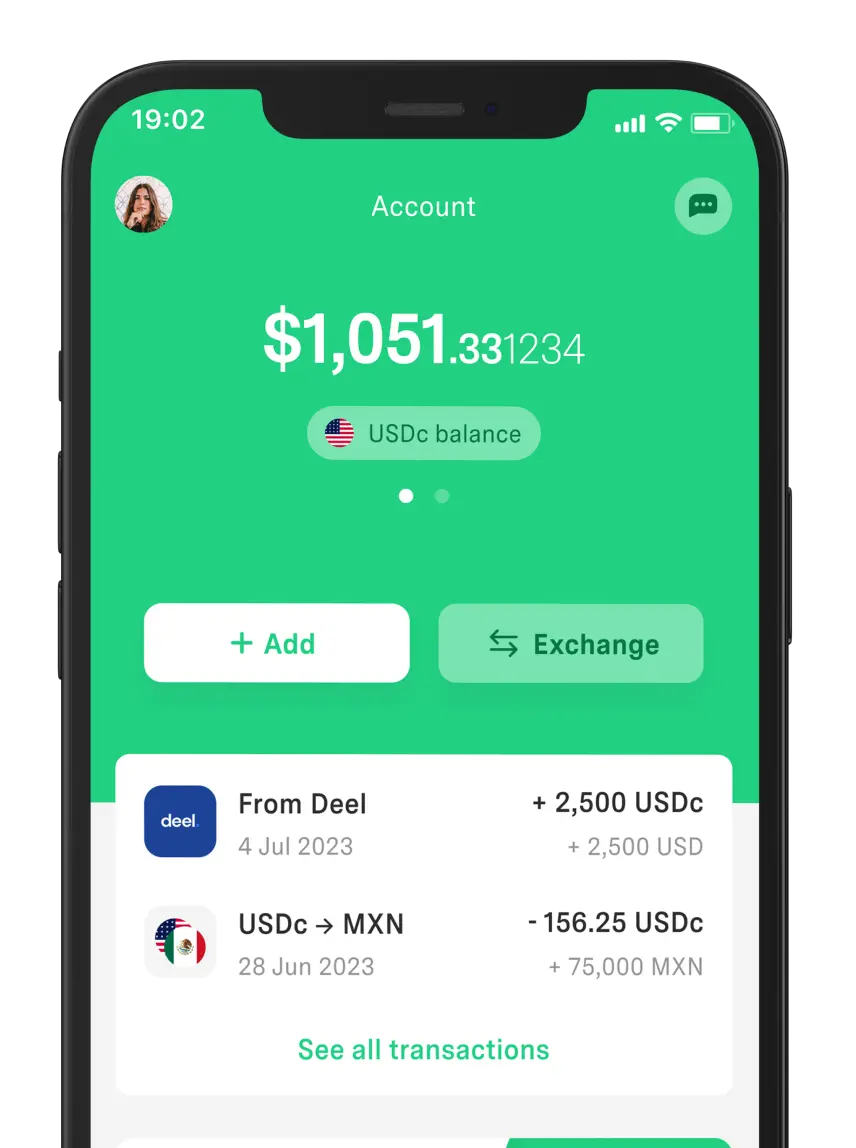 Freelancer tips
Freelancer tips Zoom: What It Is, How It Works, Features, and How to Install It
Zoom is an ideal option for both professional and personal use. Discover Zoom’s features and how to install it on your device.



Market research is an investigation that helps you understand how consumers behave and which factors influence their buying decisions.
Understanding these factors is what allows you to make better decisions and spot real opportunities before launching or scaling a product. This is because market research offers a clearer view of the environment.
In this way, it helps you anticipate trends and adapt your offer to consumer preferences.
In this sense, market research acts as a guide to define marketing, pricing, and growth strategies. And if you want to build a solid foundation to plan actions with vision and consistency, read this article to the end.
It’s a structured process that consists of collecting, analyzing, and understanding data about consumers, competitors, and the environment.
Thanks to market analysis, a company or venture can:
Identify new opportunities.
Adjust its prices.
Define its target audience more precisely.
Design more effective campaigns.
Evaluate the performance of existing products.
Discover underexplored segments.
Therefore, its value lies in providing a solid foundation to reduce risks and anticipate changes in the market.
Market research can be classified according to several approaches: purpose, subject of study, or methodology.
However, there are two main methods:
Qualitative. Focuses on understanding perceptions, opinions, and motivations of the audience through observation, interviews, focus groups, or surveys. The goal is to gain a deep view of consumer behavior, even if it’s not necessarily measurable.
Quantitative. Allows you to identify patterns, percentages, and trends based on large samples. To do this, it uses surveys, questionnaires, and statistical data that provide representative, measurable results.
Both are usually used in a complementary way. The qualitative method provides context and understanding, while the quantitative one offers the numerical strength needed to make decisions backed by statistics.
The purpose is to support the strategic decision-making process with real and verifiable information. But the objectives may vary depending on the type of company, product, or project phase.
In general, market research seeks to:
Identify opportunities and threats, including new trends, unmet needs, or external factors that may affect the business.
Analyze habits and preferences to understand how, when, and why consumers choose certain products or brands.
Measure customer satisfaction regarding the brand, quality, and shopping experience, while highlighting areas for improvement.
Evaluate the feasibility of a product/service to determine whether an idea has commercial potential before investing resources.
In addition, with solid research, you can achieve more precise market segmentation (define profitable profiles and niches). At the same time, it’s possible to refine the positioning of the brand versus the competition. This way, business and marketing decisions become clearer and more measurable.
Carrying out market research involves following a plan or schedule that ensures order in each phase and reliable results.
So, to conduct market research:
Define the objective of the study. Decide what you need to know: validate a business opportunity? Measure product acceptance? Analyze the competition? This point will set the direction for all further analysis.
Define the target audience or buyer persona. Through market segmentation, identify who your potential customers are: their ages, needs, location, interests, and purchasing power.
Choose the data collection method. You can apply qualitative techniques (interviews or focus groups) or quantitative ones (surveys and statistical data), depending on the scope of the study.
Analyze the competition. Research who your main competitors are, what they offer, how they position themselves, and what their strengths or weaknesses are. With Porter’s Five Forces model, you can detect opportunities and risks.
Gather and analyze the data. Organize the information you’ve collected, identify patterns, and summarize the findings clearly to support decision-making.
Present conclusions and strategies. Use quality indicators to measure the effectiveness of actions derived from the study and ensure that decisions are objective.
You can also connect the results of the analysis with the marketing mix to define concrete actions.
If you’re starting a business or working independently, conducting this market research will help you understand what your customers think. And that’s not all—it will also help you validate your ideas and make more accurate decisions to grow your business.
Companies and entrepreneurs don’t run market research without technological support. Above all because large budgets are not required; tools make the process easier and integrate with your day-to-day workflow.
Right now, you can use:
SurveyMonkey or Typeform: key platforms to create online forms and surveys. They collect data to validate hypotheses, understand consumption habits, or measure customer satisfaction.
SimilarWeb: helps you understand traffic and visitor sources of competitor sites.
Data.ai: offers useful statistics for studies on apps or mobile behavior.
HubSpot or Zendesk: useful for centralizing contacts, segmenting audiences, and automating campaigns. This way, information is turned into measurable marketing actions.
Google Workspace: ideal for coordinating tasks and keeping the study schedule up to date.
Each of these tools brings clarity and structure to the process. They help transform study data into concrete, sustainable decisions.
Let’s say a startup wants to launch an app that helps users manage their money and improve their financial habits.
Objective: validate the demand for an app focused on personal expense control.
Audience: young professionals between 25 and 40 years old interested in financial education.
Methodology: online surveys using platforms like Typeform and competitor analysis with Data.ai.
Results: a high interest in tools that combine security and financial education was detected.
Conclusions: the market is receptive, but the app needs to differentiate itself by offering a simple design and educational features.
Now say you want to start a business and plan to create a line of sportswear made with recycled materials and sustainable processes.
Objective: measure public acceptance of eco-friendly products.
Audience: consumers aged 30 to 50 who care about environmental impact.
Methodology: surveys on buying habits and direct observation in sports stores.
Results: 7 out of 10 people prioritize sustainability over price.
Conclusions: there is a market opportunity if you communicate the product’s traceability and offer a competitive price.
In this example, a fashion company in Mexico wants to expand its international presence and is considering entering the U.S. market.
Objective: evaluate the commercial viability and challenges of positioning a Mexican brand in the United States.
Audience: urban consumers between 25 and 45 years old interested in affordable fashion and brands with cultural identity.
Methodology: trend analysis with Google Trends, competitor review using SimilarWeb, and interviews with Latino shoppers in the U.S.
Results: there was an openness toward foreign brands with authentic concepts and competitive prices.
Conclusions: entering the U.S. market is viable if communication is adapted to the local audience and the Mexican origin is emphasized as a differentiating element.
As you can see, market research is useful for much more than launching a product or getting a business off the ground. It also helps to understand the customer, anticipate changes in demand, improve commercial strategy, and support every phase of the product life cycle.
Market research is an essential tool for any company or entrepreneur—both to understand the environment and customers, and to plan strategies based on real data.
Thanks to this kind of analysis, it’s possible to reduce risks, spot opportunities, and launch products with a higher probability of success.
Its value lies in the data it generates and how that data is interpreted.
That’s why it’s important to have tools that help turn information into effective decisions. It’s also useful to apply techniques (like deep work) to focus your effort on interpreting the data and designing strategies without distractions.
And if you’re looking for options to keep better financial control of your income, DolarApp can be that ally. Whether it’s to carry out transactions in digital dollars or digital euros—this includes sending/receiving or buying/selling currencies at a competitive exchange rate.
It’s a process that analyzes the competition, customers, and the environment. It’s used to make informed decisions, identify opportunities, minimize risks, and design effective strategies before launching or improving a product.
The basic steps include defining objectives, identifying the audience, choosing data collection methods, and analyzing the competition. Then, the results are interpreted and strategies are presented based on the study’s findings.
The most commonly used are qualitative, which seeks to understand consumer perceptions and motivations, and quantitative, which measures behaviors and preferences through surveys or statistical data. There are other approaches, but these are the most essential.
Tools that collect and analyze data, such as online forms or surveys, competitor analysis software, and information management systems. In this case, platforms like SurveyMonkey or SimilarWeb can support the process.
Sources:

The world has borders. Your finances don’t have to.
 Freelancer tips
Freelancer tips Zoom is an ideal option for both professional and personal use. Discover Zoom’s features and how to install it on your device.

 Freelancer tips
Freelancer tips A well-crafted executive summary concentrates the most important parts of a document so it can be understood in minutes. Here are the steps to create one.

 Freelancer tips
Freelancer tips Within content marketing, the blog is still key for visibility and trust. Discover 8 of its main benefits here.


